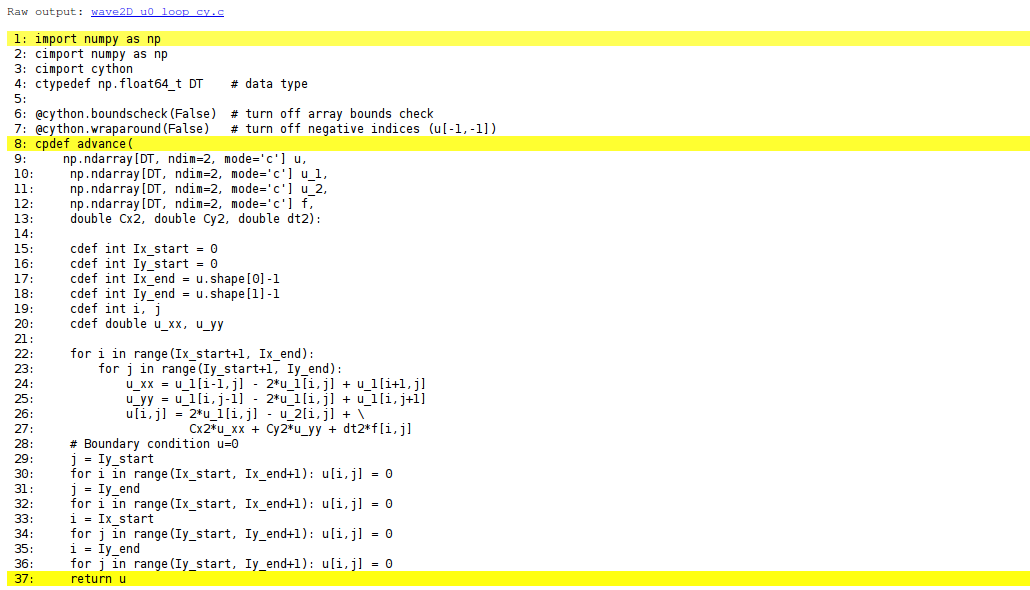$$
\newcommand{\uex}{{u_{\small\mbox{e}}}}
\newcommand{\half}{\frac{1}{2}}
\newcommand{\halfi}{{1/2}}
\newcommand{\xpoint}{\boldsymbol{x}}
\newcommand{\normalvec}{\boldsymbol{n}}
\newcommand{\Oof}[1]{\mathcal{O}(#1)}
\newcommand{\Ix}{\mathcal{I}_x}
\newcommand{\Iy}{\mathcal{I}_y}
\newcommand{\It}{\mathcal{I}_t}
\newcommand{\setb}[1]{#1^0} % set begin
\newcommand{\sete}[1]{#1^{-1}} % set end
\newcommand{\setl}[1]{#1^-}
\newcommand{\setr}[1]{#1^+}
\newcommand{\seti}[1]{#1^i}
\newcommand{\Real}{\mathbb{R}}
$$
Visual inspection of the C translation
See how effective Cython can translate this code to C:
Terminal> cython -a wave2D_u0_loop_cy.pyx
Load wave2D_u0_loop_cy.html in a browser (white: pure C, yellow: still Python):

Can click on wave2D_u0_loop_cy.c to see the generated C code...
